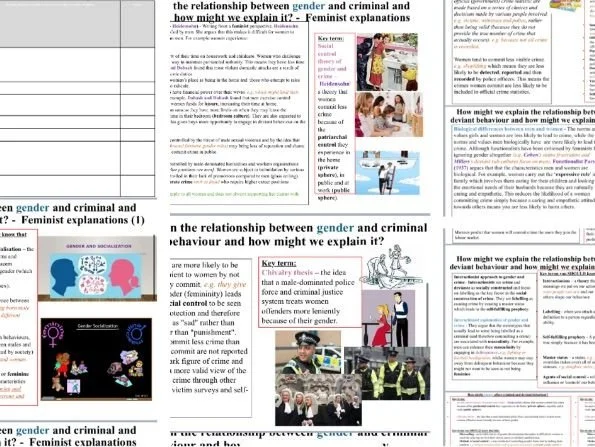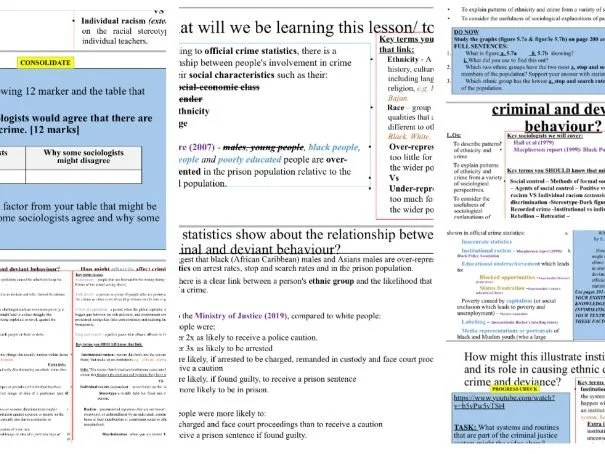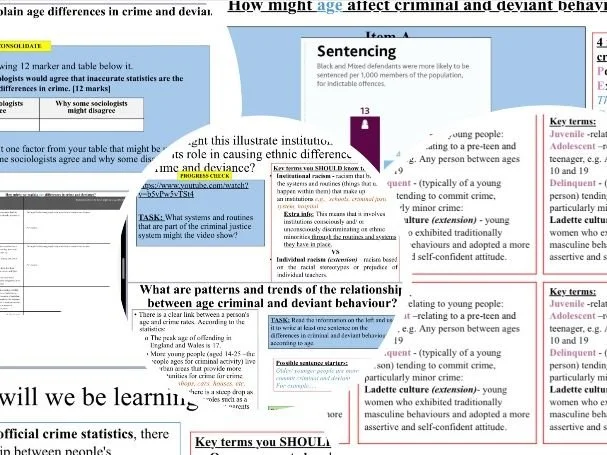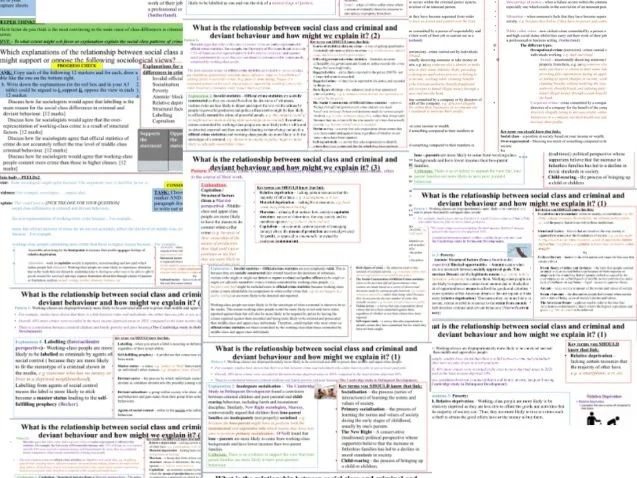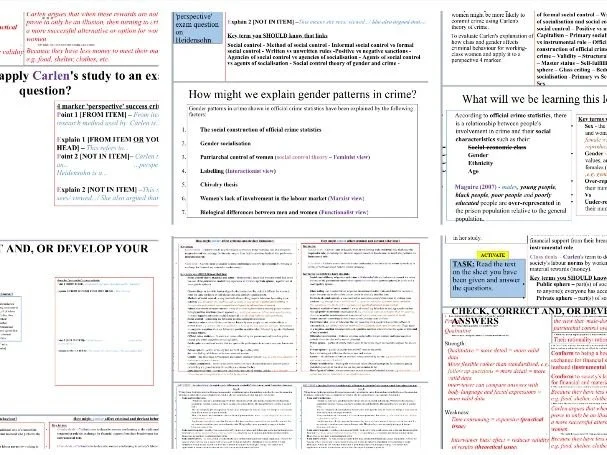 Image 1 of 2
Image 1 of 2

 Image 2 of 2
Image 2 of 2



AQA GCSE Sociology: Crime - Social class patterns in female crime
Detailed lesson with lots of scaffolding based on adaptive teaching that help students understand and identify and describe gender and class patterns and trends in crime and deviance for working-class and middle-class women. Students will explain why working-class women might be more likely to commit crime using Carlen’s theory of crime.
Cover the following key terms: Gender deal, class deal
Covers the following sociologists: Feminist Carlen, Maguire
Key terms students should know: Social control – Methods of informal social control – Methods of formal social control – Written vs unwritten rules – Agency of socialisation and social control – Agents of socialisation and social control – Positive vs negative sanctions – Patriarchy – Capitalism – Primary socialisation – Gender roles – Expressive vs instrumental role – Official crime statistics – The social construction of official crime statistics – The dark figure of crime – Validity – Structuralism vs interactionism – Labelling – Master status – Self-fulfilling prophecy – Private vs public sphere – Glass ceiling – Bedroom culture – Gender socialisation –Primary vs Secondary socialisaton – Gender vs Sex
Key term and definition sheet for the lesson included
Includes two ‘perspective’ 4 markers (on Carlen and Heidensohn) with detailed scaffolding to help students answer them.
RESOURCES CAN BE FOUND AT THE END OF PPT
Answers for main activity included
Detailed lesson with lots of scaffolding based on adaptive teaching that help students understand and identify and describe gender and class patterns and trends in crime and deviance for working-class and middle-class women. Students will explain why working-class women might be more likely to commit crime using Carlen’s theory of crime.
Cover the following key terms: Gender deal, class deal
Covers the following sociologists: Feminist Carlen, Maguire
Key terms students should know: Social control – Methods of informal social control – Methods of formal social control – Written vs unwritten rules – Agency of socialisation and social control – Agents of socialisation and social control – Positive vs negative sanctions – Patriarchy – Capitalism – Primary socialisation – Gender roles – Expressive vs instrumental role – Official crime statistics – The social construction of official crime statistics – The dark figure of crime – Validity – Structuralism vs interactionism – Labelling – Master status – Self-fulfilling prophecy – Private vs public sphere – Glass ceiling – Bedroom culture – Gender socialisation –Primary vs Secondary socialisaton – Gender vs Sex
Key term and definition sheet for the lesson included
Includes two ‘perspective’ 4 markers (on Carlen and Heidensohn) with detailed scaffolding to help students answer them.
RESOURCES CAN BE FOUND AT THE END OF PPT
Answers for main activity included

